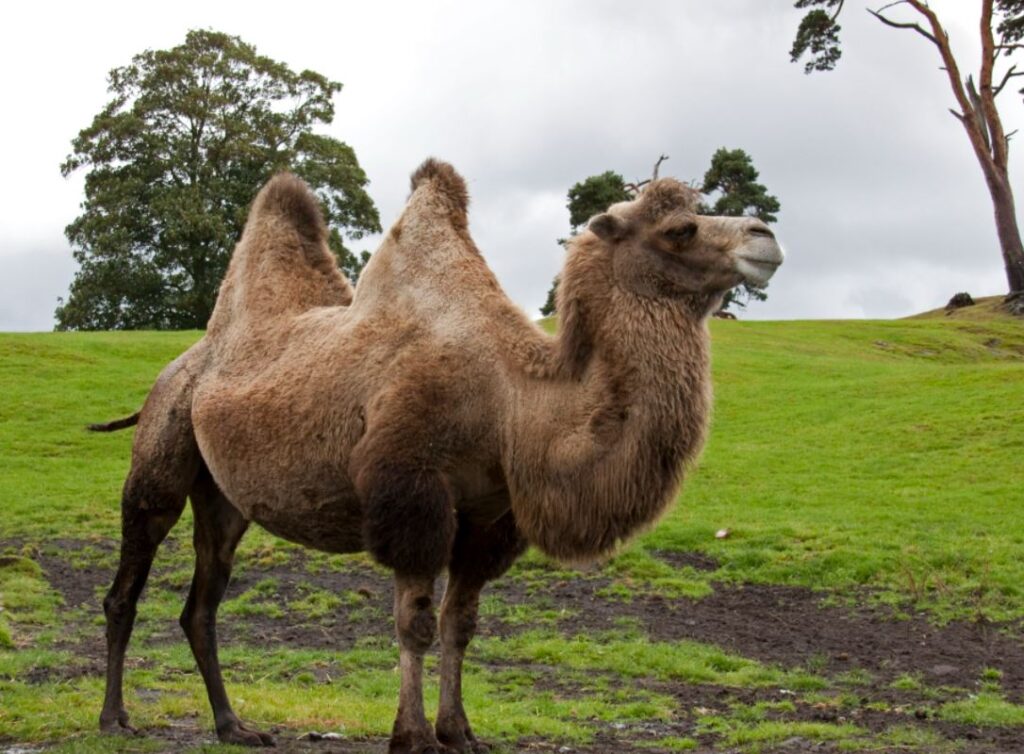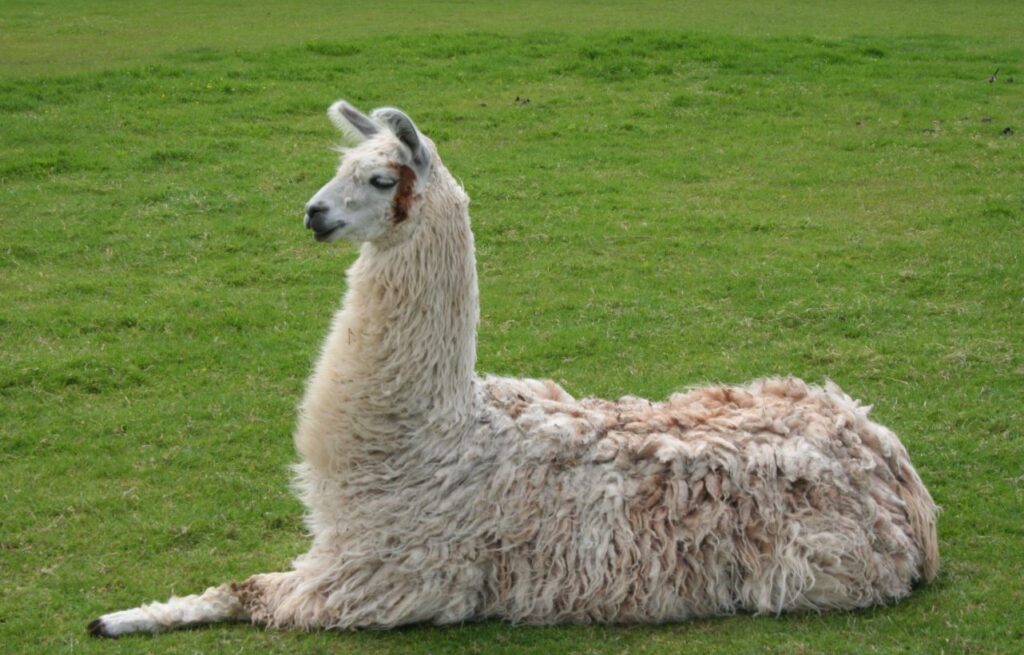Llamas and camels are members of the same Camelidae family, and as such, they share quite a few similarities and may even look similar at first glance, except for the distinctive humps on the back. Even with the distinct difference between the two, in some places in South America, llamas are sometimes referred to as camels.
How To Tell Llamas From Camels?
1. Humps. The most obvious difference between the two. Llamas do not have humps, while camels have one or two (One for dromedary and two for Bactrian camels).
2. Body Mass and Tails. Camels have bulkier and taller bodies with longer tails compared to llamas.
3. Habitat. One can usually see camels in the hot and deserts of Asia, while llamas prefer the cool and dry mountains of South America.
4. Feet. Llamas have narrow feet with toes, each having plantar pads and more separated compared to camels. Camels have wide feet with toes connected by tough web and leathery padded soles.
5. Average Life Expectancy. The average life expectancy of a camel is between 40to 50 years. Meanwhile, llamas typically live for 15 to 25 years, with some surviving to 30 years or more.
6. Domestication. Llamas exist only as domesticated animals. While most camels today are domesticated, feral populations also exist in Australia, India, and Kazakhstan. Wild camels can only be found in the wild Bactrian camel population of the Gobi Desert in East Asia.
7. Medical Uses. Doctors and researchers have determined antibodies found in llamas to be well suited to treat certain diseases. There are no such claims made regarding camels except for dubious claims about camel urine.
We will discuss these differences in more broad details below.
Camels Have Humps; Llamas Do Not
Perhaps the most obvious difference between the two, camels have distinctive fatty deposits on their backs. The number of humps depends on the species; dromedary camels which make up 94% of the world’s camel population, have one hump while Bactrian camels have two humps. Contrary to popular beliefs, camels do not store water directly in their humps. The humps serve as storage for fatty tissue. This fatty tissue is then metabolized, which yields more than one gram of water for every gram of fat.

Llamas do not have any kind of hump; thus, they do not have the above characteristics. However, they also have extremely long and complex large intestines, which allows them to survive on much less water than other animals.
Camels Are Bigger than Llamas
A full-grown adult dromedary camel stands at 1.85 meters (6 feet 1 inch) at the shoulder and 2.15 meters (7 feet 1 inch) at the hump, while Bactrian camels can be taller. Dromedaries usually weigh 300 to 600 kilograms (660 to 1,320 lb), while Bactrians can reach 1,000 kilograms (2,200 lb).
Llamas are smaller and lighter, usually reaching up to 1.7 to 1.8 meters (5 feet 7 inches) from head to toe and weighing between 130 and 200 kilograms (290 and 440 lb).
Where Do Llamas and Camels Live?
Camels originated in North America and spread to Asia. Eventually, humans domesticated them, and they spread globally. They are usually common in the hot and deserts of Asia, such as in the Middle East. However, wild camels can only be seen in the Gobi Desert in northwestern China and southwestern Mongolia.
Llamas can be seen worldwide, but they are more common in the cool and dry mountains of South America, amidst rocks and precipices throughout Peru, the southern part of Ecuador, and as far south as the middle of Bolivia.
Llamas Are “Bump-footed”; Camels Have Wide Toes
Bactrian camels can run up to 65 km/h (40mph) even with all that weight. Camels have wide toes on their hoofs that provide grip for soil, which is quite handy when running short bursts. A tough web connects the toes, and the sole is leathery padded.
The narrow feet and separated toes of llamas have distinct plantar pads. These peculiar bumps on the soles of their feet make them “bump-footed”.
Camels Live Longer
With an average life expectancy of 40 to 50 years, camels can be around for quite a long time. The maximum life expectancy of llamas is 25 years, with some individuals surviving 30 years or more.
There Are Wild Camels; Llamas Are Purely Domesticated
Recently, the camel population is reduced to an estimated 1.4 million animals, mostly domesticated. However, Wild Bactrian camels are still existing but critically endangered, hailing in the Gobi and Taklamakan Deserts in China and Mongolia.
Llamas, like alpacas, exist only as domesticated animals. This means that humans influence their care and reproduction.
Llamas Have Medicinal Properties
Even though camel urine has been used in Arabian Peninsula for medicinal purposes for centuries as part of Islamic prophetic medicine, the World Health Organization has discouraged the practice of drinking camel urine. The practice has been linked with the emergence of the Middle East Respiratory Syndrome Coronavirus.
In recent years, scientists have been studying the use of llama antibodies that are well suited to treat certain diseases. It has even been studied for contribution to the fight against coronaviruses, including the MERS and SARS-CoV-2.
Frequently Asked Questions
Can llamas and camels mate?
Camels can weigh up to six times as much as a llama, so the act of mating will not be possible. However, the Camel Reproduction Centre in Dubai has created a hybrid between a male dromedary camel and a female llama via artificial insemination. They called this hybrid cama. As of April 2008, five camas have been produced.
Why do llamas spit?
Llamas spit at each other as a way of discipline and establishing ranking. In rare cases that they do spit on humans, it has been reasoned that these llamas might be raised by humans and have not spent much time around other llamas. This way, by spitting, they show that they are treating humans just as they would other llamas.
Can camels and llama fight?
Camels are not built for battle, even though they can sometimes be temperamental. They are hardly aggressive but, there have been instances of camel wrestling in some places. These fighting camels are specially bred for such a purpose. Llamas may be trained to guard or protect livestock from predators. As with camels, llamas can also fight by screaming, neck wrestling, biting, and chest butting.
How long can camels and llamas last without water?
Camels can go up to seven months in the desert without drinking, while llamas have to drink water every day.

